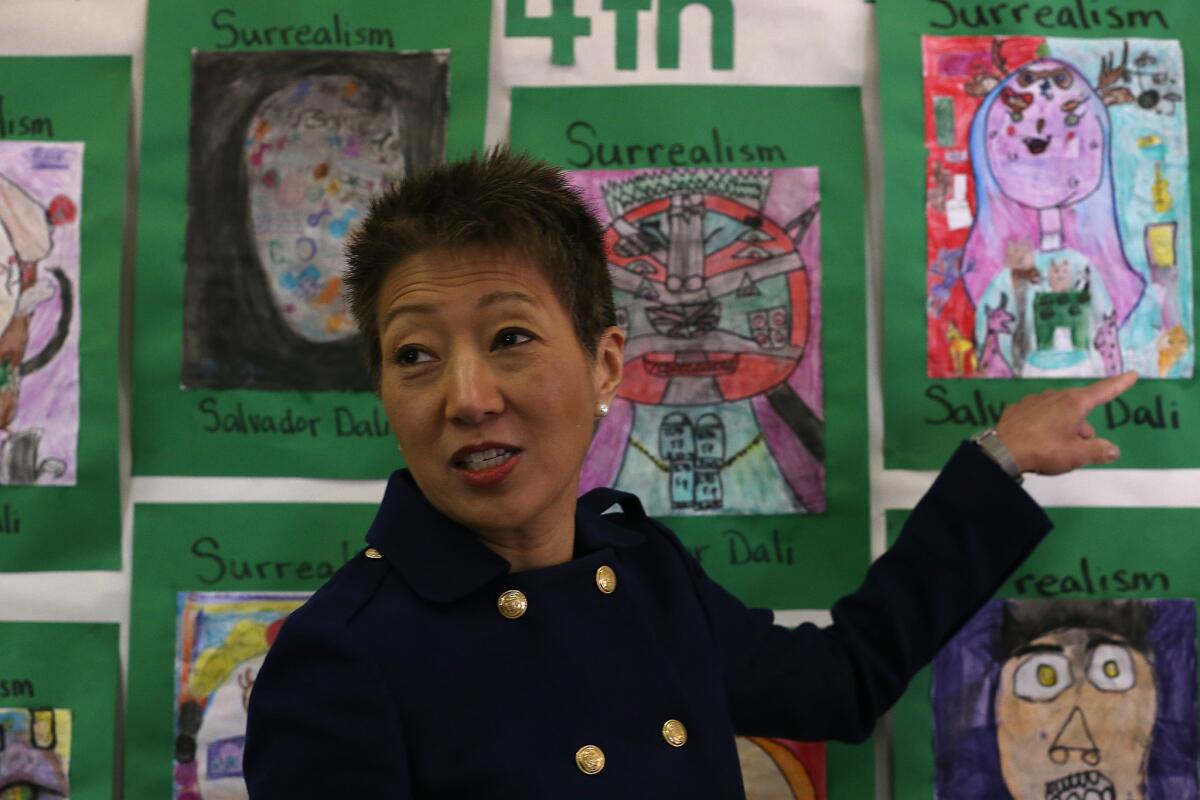NEA’s Jane Chu visits L.A. arts programs, calls for focus on education

- Share via
Amid a national conversation about the decline of arts education, National Endowment for the Arts Chairwoman Jane Chu came to Southern California this week and visited area arts programs including one at the Colburn School focusing on low-income sixth- and seventh-grade musicians.
Appointed by President Obama eight months ago, Chu said she brings to the position the experience of being the daughter of Chinese immigrants — something that informs her perspective on arts education.
To a crowd of educators, artists and arts enthusiasts, she made the case for a “both-and approach.” Only through the collaborative efforts of the NEA and local arts organizations, she said, can both see arts programs rebound.
“We are thinking about the whole system and the community,” Chu said about her agency’s mission. “It takes a village to help provide arts education and help support our students, so everybody, together, makes it a much stronger system.”
She cited not only the $3.2 billion the NEA has provided to arts programs nationally over the last 30 years but also the $22 billion in additional giving that she said has been sparked by the agency’s matching requirements.
Chu walked the halls of Martin Luther King Jr. Elementary School in Compton, which implemented arts education this school year after receiving funding from Turnaround Arts, an initiative of the president’s Committee on the Arts and the Humanities.
“We’re just seeing how it’s engaging our kids a lot more,” principal Stephanie Richardson said. “They want to participate. We’ve gotten a lot more parent engagement as well.”
Later at the Colburn, Chu fielded questions about criticism over controversial projects that the NEA has funded in the past. Chu reminded detractors of the purpose of art.
“It can provoke,” she said. “It can provide thoughtful consideration of different types of art. It can also be healing and have entry points that are non-threatening.”
It’s this vastness of the field that makes art accessible for all, she said.
As the agency celebrates its 50th anniversary, Chu said she wants to continue the conversation about the importance of arts and arts education.
“With the shifting demographics of America, this is a great opportunity for the arts to be at the center,” Chu said. “Arts is an equalizer.”
More to Read
The biggest entertainment stories
Get our big stories about Hollywood, film, television, music, arts, culture and more right in your inbox as soon as they publish.
You may occasionally receive promotional content from the Los Angeles Times.










